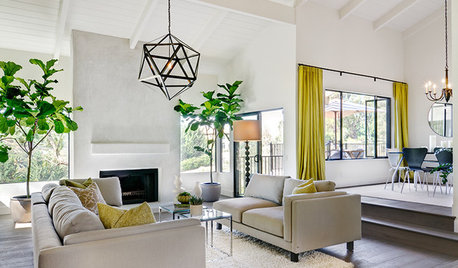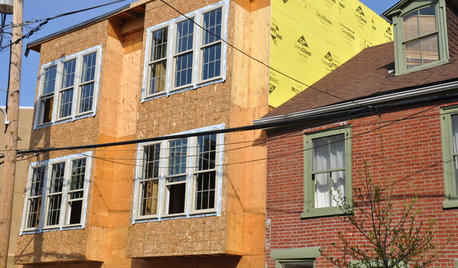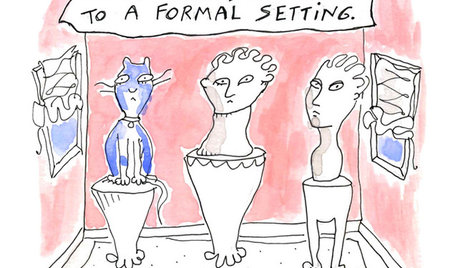Need help deciding between Trane models for a new AC job
Nick Bennett
5 years ago
Featured Answer
Sort by:Oldest
Comments (39)
tigerdunes
5 years agoNick Bennett
5 years agoRelated Discussions
Confused! Pls. read and help us decide- Trane a/c or heat pump??
Comments (8)We live 20 miles south of Houston. Our home is 45 years old, Brick with 2,345 square feet living area. We are all electric, no gas on the property. Our A/C is a 4 ton with electric heat strips that was installed in 1992. We have done everything the utility company recommends to make out home energy efficient. We still get over $800 electric bills. I have a bid from Trane dealer. (Home Depot) The salesman said our current A/C was a 10 SEER when installed and loses 4% per year. So using his figures I a running at about a 4 SEER. He proposes to install either a TRANE XL14i for $8,123.45 or an XL16i for $9,775.00. Also an air handler to match with 20 kWh of heat strips. All the above is with the ten year parts and labor extended warranty from Trane. They also want to service the new unit twice a year for $149 per year. We are currently paying .155 per kWh. Two questings. How much can I realistically expect to save on my electric bill with either of these two units and is the price reasonable....See MoreHelp with Trane AC proposal
Comments (6)It's hard to say whether 3 ton is adequate simply by looking at the floor plan, but I like the fact that the contractor is not quick to oversize as many are. Oversized systems do not provide the comfort or efficiency you are looking for. If they did the calculations to determine that 3 tons is adequate, then I would certainly not hesitate to downsize. Many homes have undersized ductwork to begin with, so if you had a 4 ton system to begin with, going with a 3 ton would help allow for more even air distribution. Longer run cycles are better for the equipment and your comfort. Looks like (3) is also quoting the 2-stage XR16 model, which is essentially equivalent to the newer labeled XR17. Option (2) from your first contractor is for the single stage XR16 model, which replaced the XR15 and again, is essentially equivalent mechanically speaking. The new naming simply better reflects some of the SEER rating capabilities some matchups are able to achieve, but does create some confusion. I do recommend the 2-stage condenser (previous XR16 model -- confirm with dealer you are getting the 2-stage "A" model and not the newer single stage "B" model -or- XR17), as well as the XV80 furnace for the variable speed blower (which when set up properly assists with airflow on restrictive duct systems and has dehumidification features). You wouldn't be disappointed with this system properly sized and installed. The XR16 (single stage) is also a very nice unit, but 2-stage does give better comfort. You'll have to decide if it's worth it to you. Proper installation of either system you select is the most important thing to consider. What is the first dealer doing about the existing linesets? Both dealers checked to ensure proper size of existing? If either has done a true Manual J load calculation, I would not be surprised if the 60k btu XV95 furnace with 3 ton blower was all your home required....See MoreHelp deciding on new gas furnace and A/C
Comments (55)Oh, no way, a failure by you, someone who's helping folks in your spare time?! No way! (I hope you were joking.) By "not a single person mentioned", I meant like installers when they came to give estimates, not anyone here. No trouble, it's all a learning experience. Yes, I had a media cabinet installed, but it was a Honeywell. I couldn't convince my installer to get the official Ruud cabinet. I wouldn't even call the condensate issue a failure necessarily by my installer, because he is right that my sump pump should work in freezing weather. Just these furnaces still aren't common in my area, so I'm surprised there aren't more words of caution out there. (In fact, my emergency handyman who came out that night cause I thought something had burst -- services rental properties as his full-time job -- turned to me and said "I haven't seen this before but your furnace is discharging water.") My installer is considering a condensate pump and there's a slight issue where the outdoor temp isn't being read. But overall, I'm super happy with my 96% Ruud and EcoNet thermostat. The thermostat tells me whether it's running high or low stage, I've been told I'm spending too much time with it. I can't thank everyone here enough. In the end, I was able to find a great HVAC team. It's been quite the adventure. I'll post pictures soon. The duct work is a masterpiece, everything was turned 90 degrees because otherwise code required I create a service opening in the wall....See MoreLooking for some help deciding between Coleman and Trane (both 2 stage
Comments (15)You have been quoted 200K BTUs of heating (one furnace is 80% AFUE). That is enough to heat two houses. The new condenser is 4 tons. How big is the other condenser? Did this contractor do a load calculation? Please post your location, the sizes of the first and second floors, and anything about the insulation qualities of the house. The sizes of the equipment seem very over sized. Why is the part warranty on the furnace only 5 years, but on the condenser it is 10 years? Is this a typo? I think both quotes are high considering what you are buying. Get some more quotes and find at least one contractor who will do a load calculation....See Moretigerdunes
5 years agoNick Bennett
5 years agodva79
5 years agolast modified: 5 years agotigerdunes
5 years agoNick Bennett
5 years agoNick Bennett
5 years agoNick Bennett
5 years agotigerdunes
5 years agoNick Bennett
5 years agotigerdunes
5 years agoNick Bennett
5 years agotigerdunes
5 years agomike_home
5 years agoNick Bennett
5 years agoNick Bennett
5 years agotigerdunes
5 years agoNick Bennett
5 years agoionized_gw
5 years agoNick Bennett
5 years agolast modified: 5 years agoAustin Air Companie
5 years agotigerdunes
5 years agoNick Bennett
5 years agoNick Bennett
5 years agoAustin Air Companie
5 years agomike_home
5 years agoAustin Air Companie
5 years agomike_home
5 years agoionized_gw
5 years agoAustin Air Companie
5 years agomike_home
5 years agoAustin Air Companie
5 years agoCurt S
5 years ago
Related Stories

SELLING YOUR HOUSEHelp for Selling Your Home Faster — and Maybe for More
Prep your home properly before you put it on the market. Learn what tasks are worth the money and the best pros for the jobs
Full Story
DECLUTTERINGDecluttering Help: What to Do When Nothing ‘Sparks Joy’
If the Marie Kondo phrase doesn’t help you decide what to keep and what to discard, try asking these 4 questions
Full Story
DECLUTTERINGDownsizing Help: How to Edit Your Belongings
Learn what to take and what to toss if you're moving to a smaller home
Full Story
SELLING YOUR HOUSE10 Low-Cost Tweaks to Help Your Home Sell
Put these inexpensive but invaluable fixes on your to-do list before you put your home on the market
Full Story
HOUSEKEEPINGWhen You Need Real Housekeeping Help
Which is scarier, Lifetime's 'Devious Maids' show or that area behind the toilet? If the toilet wins, you'll need these tips
Full Story
COLORPick-a-Paint Help: How to Quit Procrastinating on Color Choice
If you're up to your ears in paint chips but no further to pinning down a hue, our new 3-part series is for you
Full Story
WORKING WITH PROS5 Steps to Help You Hire the Right Contractor
Don't take chances on this all-important team member. Find the best general contractor for your remodel or new build by heeding this advice
Full Story
LIFE12 House-Hunting Tips to Help You Make the Right Choice
Stay organized and focused on your quest for a new home, to make the search easier and avoid surprises later
Full Story
MOST POPULAR7 Ways Cats Help You Decorate
Furry felines add to our decor in so many ways. These just scratch the surface
Full Story
SELLING YOUR HOUSE5 Savvy Fixes to Help Your Home Sell
Get the maximum return on your spruce-up dollars by putting your money in the areas buyers care most about
Full Story



mike_home